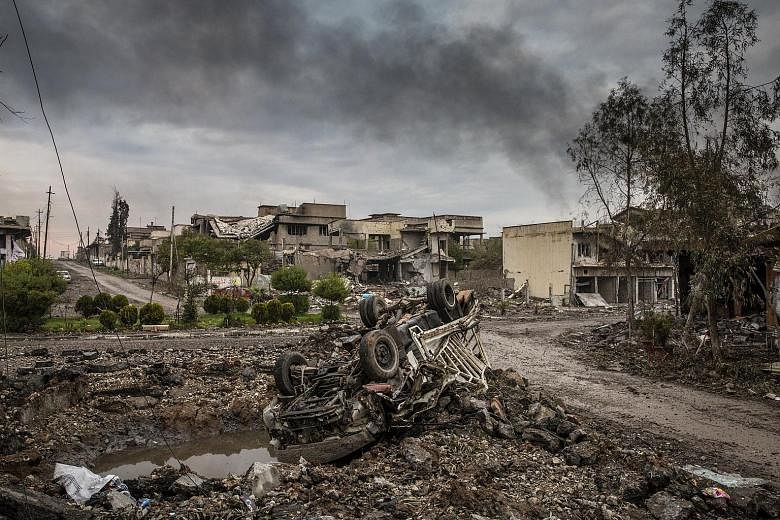MAKESHIFA (Iraq) • The assailants came at dusk, creeping on foot through the dusty palm groves near the Tigris River, armed only with a rocket-propelled grenade, a light machine gun and Kalashnikovs. When the attack on the village last month was over, nine members of a Sunni tribe that had opposed the Islamic State in Iraq and Syria (ISIS) were dead, and four were wounded.
This is ISIS in Iraq in 2020: low-tech, low-cost, rural - but still lethal. And while it has not carried out attacks on the scale that it did a few years ago, the number of attacks has begun to grow again.
As American and Iraqi negotiators began a new round of strategic talks yesterday, the question of how to respond to ISIS' quiet resurgence will be at the centre of the discussion.
There are currently about 5,200 United States troops in Iraq, whose main missions are counter-terrorism and training Iraqi forces.
The Trump administration, which sees the US presence in Iraq as crucial for tamping down the resurgence of ISIS and as a bulwark against Iranian power in Iraq, wants to keep a substantial force there.
"We're going to continue to maintain forces as long as the Iraqi government is willing to have US and coalition forces present in the country until the enduring defeat of Daesh is accomplished, and it's not yet accomplished," Mr James Jeffrey, the US special envoy to the region, said in a briefing last Friday, using the Arabic acronym for ISIS. "That's our policy."
But there has been pressure on both sides to reduce the US military presence. Congress has increasingly questioned the continued American troop presence in Iraq.
The Pentagon is reluctant to keep more than the absolute minimum number of troops there because they have been attacked by Iranian-backed militias. Pentagon officials have plans to reduce the number of troops in Iraq to 2,500-3,000, but have no fixed numbers or timetable.
Other members of the 29-country US-led military coalition have already cut their numbers in half, to about 1,200 troops, because of the coronavirus pandemic.
On the Iraqi side, the country's Parliament, furious over the US air strikes in Iraq that killed an Iranian military leader and several Iraqi officials, passed a resolution in January demanding the withdrawal of American forces.
The talks starting yesterday, which last took place in 2018, will touch on "all strategic issues between our two countries", Secretary of State Mike Pompeo said in April, including the presence of the US forces and "how best to support an independent and sovereign Iraq".
But hovering over the discussion is Iran, which wields powerful influence in Iraq that Washington wants to see reduced.
The US would like to see diminished economic ties between Iraq and Iran, and less Iranian influence over the Iraqi security forces, while Iraq would like stronger guarantees that the US will not provoke a conflict with Iran on Iraqi soil.
In addition to discussion of the US military presence, the strategic talks, which will be conducted online and are expected to continue for several months, will also cover energy and the economy.
NYTIMES

